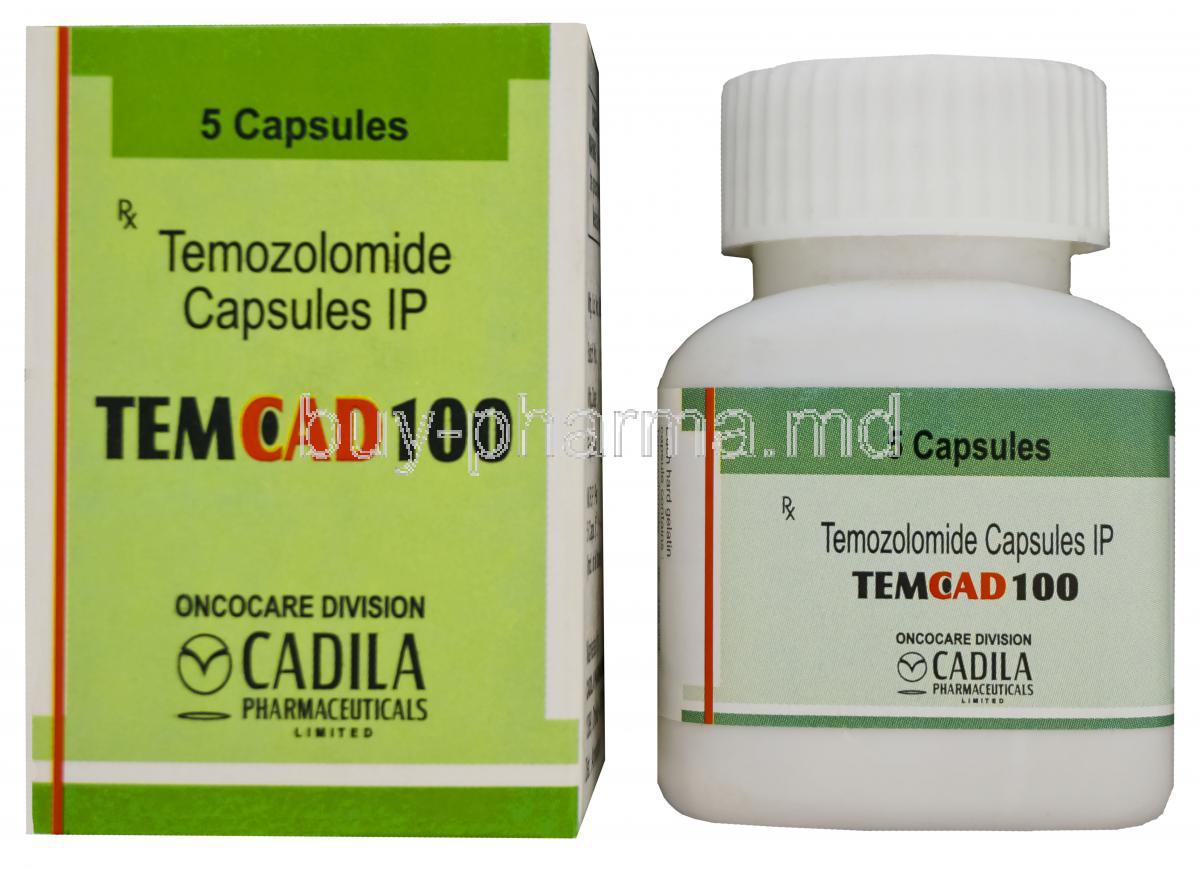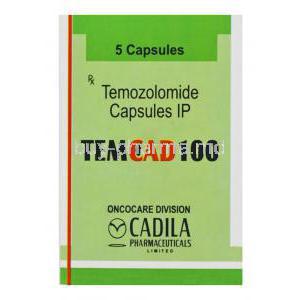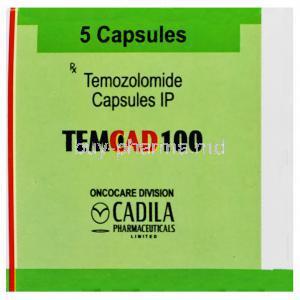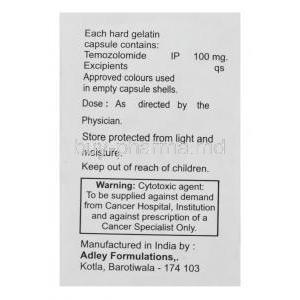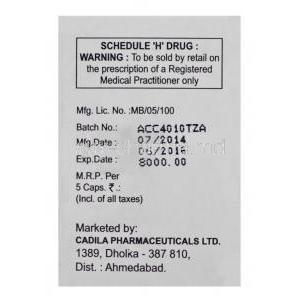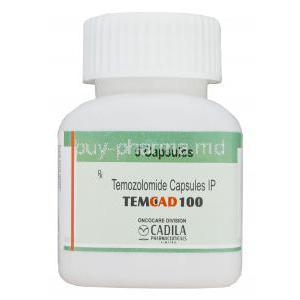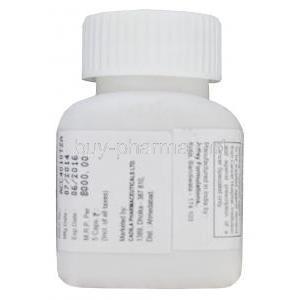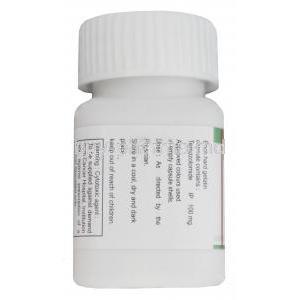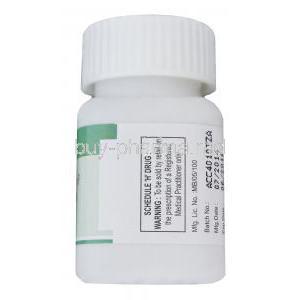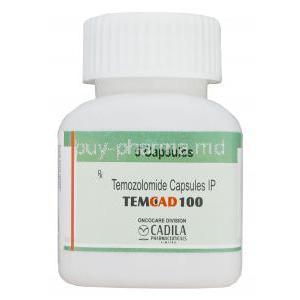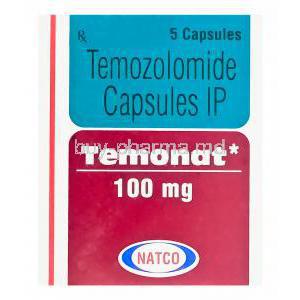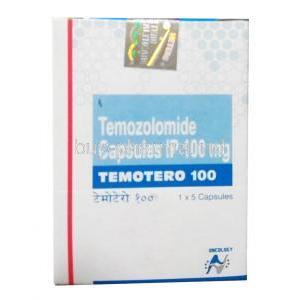Introduction to Temocad (Temozolomide)
Overview of Temocad and its Therapeutic Importance
Temocad, containing the active agent temozolomide, is an advanced chemotherapeutic option primarily designed for the management of aggressive brain malignancies. It has become a cornerstone in neuro-oncology due to its ability to penetrate the central nervous system and directly target tumor cells. By offering improved survival rates and delaying disease progression, Temocad provides hope in conditions where therapeutic options are limited.
Classification: Alkylating Agent and Antineoplastic Drug
Temocad belongs to the family of alkylating agents, a category of cytotoxic drugs that interfere with DNA replication. As an antineoplastic medication, it suppresses abnormal cellular proliferation and disrupts the growth patterns of malignant cells. Its dual capacity as both an alkylating agent and a prodrug enhances its pharmacological versatility.
Regulatory Status and Availability in Oncology Treatments
Approved by regulatory authorities worldwide, including the U.S. FDA and EMA, Temocad is available as a standard of care in brain tumor protocols. It is included in clinical guidelines for glioblastoma multiforme and is accessible in oral capsules and injectable formulations across multiple markets.
Composition and Formulation
Active Ingredient: Temozolomide
The therapeutic essence of Temocad is temozolomide, a cytotoxic agent with proven efficacy in high-grade gliomas. Its unique chemical structure allows for rapid activation under physiological conditions, making it a reliable option in oncologic therapy.
Available Dosage Forms and Strengths
Temocad is commonly offered as oral capsules in a range of strengths, such as 5 mg, 20 mg, 100 mg, and 250 mg. Intravenous preparations are also available, enabling clinicians to tailor treatment for patients unable to tolerate oral medications.
Inactive Ingredients and Excipients
Excipients may include lactose monohydrate, colloidal silicon dioxide, and magnesium stearate. These components aid stability, enhance absorption, and maintain consistent pharmacokinetic activity.
Mechanism of Action: How Temocad Works
DNA Alkylation and Disruption of Cancer Cell Replication
Once ingested, temozolomide undergoes rapid conversion to its active metabolite, MTIC (monomethyl triazeno imidazole carboxamide). This compound introduces alkyl groups at specific DNA sites, primarily the O6 position of guanine, creating irreparable DNA damage and preventing tumor cell replication.
Role in Apoptosis and Tumor Cell Death
The DNA lesions induced by Temocad trigger programmed cell death pathways. As cells fail to repair the accumulated genetic insults, apoptosis is initiated, leading to a reduction in tumor mass.
Pharmacokinetics and Bioavailability
Temocad exhibits nearly complete oral bioavailability, with peak plasma concentrations achieved within one hour. Its rapid systemic absorption ensures consistent drug levels, while its short half-life allows precise control over therapy cycles.
Blood-Brain Barrier Penetration and Relevance in Brain Tumors
One of the distinguishing features of Temocad is its capacity to cross the blood-brain barrier efficiently. This property underpins its pivotal role in the management of intracranial neoplasms, ensuring that therapeutic concentrations reach the target site.
Approved Medical Uses of Temocad
Primary Use in Glioblastoma Multiforme
Temocad is the first-line treatment for glioblastoma multiforme, often administered alongside radiotherapy in newly diagnosed cases. Its ability to extend median survival has made it an indispensable part of treatment regimens.
Anaplastic Astrocytoma Management
Temocad is approved for patients with refractory or recurrent anaplastic astrocytoma, a malignant glioma subtype. It is utilized both as a salvage therapy and as part of multimodal treatment approaches.
Recurrent or Refractory Malignant Gliomas
For patients experiencing relapse, Temocad provides an effective therapeutic recourse. Its cytotoxic action slows disease progression and improves symptom control.
Use in Newly Diagnosed Brain Cancers in Combination Therapy
In combination with radiotherapy, Temocad forms the gold-standard protocol for newly diagnosed glioblastoma patients. This synergistic approach enhances efficacy by sensitizing tumors to radiation-induced damage.
Off-Label Uses of Temocad
Melanoma Treatment Protocols
Temocad has been employed in the management of advanced melanoma. Its use in combination with other immunotherapeutic agents offers potential benefits in resistant cases.
Neuroendocrine Tumors and Rare Cancers
Clinical investigations have explored Temocad’s efficacy in rare malignancies such as aggressive neuroendocrine tumors, highlighting its versatility in oncology beyond the brain.
Pediatric Oncology Applications
Though not universally approved, Temocad has been studied in pediatric populations with recurrent brain tumors. Its tolerability and manageable toxicity profile have encouraged cautious off-label use in specialized centers.
Use in Hematologic Malignancies (Lymphoma, Leukemia)
Emerging evidence suggests potential applications in hematologic cancers, particularly when conventional therapies have failed. Research continues to refine its role in these settings.
Dosage and Administration Guidelines
Standard Dosing Regimen for Glioblastoma Multiforme
Initial therapy often begins with 75 mg/m² daily during radiotherapy, followed by maintenance cycles of 150–200 mg/m² for five consecutive days in a 28-day cycle. This regimen balances efficacy with tolerability.
Cycle-Based Administration Protocols
Treatment cycles are repeated every 28 days, allowing bone marrow recovery between courses. The number of cycles depends on therapeutic response and patient tolerability.
Dosage Adjustments Based on Blood Counts and Organ Function
Dose reductions or treatment delays may be necessary if neutropenia, thrombocytopenia, or hepatic impairment develops. Close hematological monitoring is essential throughout therapy.
Intravenous vs. Oral Administration Considerations
While oral capsules remain the primary route, intravenous formulations are reserved for patients unable to swallow or absorb the drug effectively. Both routes deliver equivalent bioavailability.
Duration of Therapy and Treatment Continuation Criteria
Treatment typically extends for six cycles, though therapy may be prolonged in cases demonstrating continued clinical benefit. Discontinuation is warranted if toxicity becomes unmanageable or disease progression occurs.
Administration in Special Populations
Administration to Elderly Patients with Comorbidities
Elderly patients often tolerate Temocad well, though heightened vigilance is required due to increased susceptibility to myelosuppression. Dose modifications may be appropriate in frail individuals.
Administration to Pregnant Women and Nursing Mothers
Temocad is contraindicated in pregnancy due to its teratogenic potential. Women of childbearing age should employ effective contraception during therapy and for a defined period after cessation. Breastfeeding is strongly discouraged as the drug may be excreted in milk.
Pediatric Dosage Considerations and Safety Profile
Use in children remains experimental and off-label. While studies indicate a degree of efficacy, long-term safety data are limited, necessitating careful clinical judgment.
Dose Modifications in Patients with Renal or Hepatic Impairment
Patients with mild to moderate hepatic or renal dysfunction generally do not require dosage alteration, though severe impairment warrants cautious use with intensified monitoring of systemic toxicity.
Side Effects of Temocad
Overview of Possible Adverse Reactions
Temocad (temozolomide) is a powerful chemotherapeutic medication, and like other alkylating agents, it is associated with a spectrum of side effects. Some reactions are mild and transient, while others may be severe and require immediate medical intervention. The intensity and frequency of adverse effects often depend on dosage, treatment duration, and individual patient tolerance.
Common Side Effects
Nausea, Vomiting, Constipation
Gastrointestinal disturbances are among the most frequently observed reactions. Many patients report persistent nausea, episodic vomiting, and constipation. Antiemetic therapy is usually prescribed prophylactically to mitigate these issues.
Fatigue and Weakness
Temocad can lead to profound fatigue and physical weakness, impacting daily activities. This effect is cumulative and tends to intensify with successive treatment cycles.
Loss of Appetite and Hair Thinning
Appetite suppression is common, often accompanied by unintentional weight loss. Hair thinning, though typically not as extensive as with some other chemotherapies, may occur and is usually reversible after treatment cessation.
Serious Side Effects
Myelosuppression (Neutropenia, Thrombocytopenia, Anemia)
The most clinically significant toxicity of Temocad is myelosuppression. This manifests as:
- Neutropenia – a dangerous reduction in white blood cells, raising infection risk.
- Thrombocytopenia – low platelet counts that increase bleeding tendencies.
- Anemia – decreased red blood cells, leading to pallor and extreme fatigue.
Increased Risk of Infections
Due to suppressed immunity, patients become more susceptible to bacterial, viral, and fungal infections. Opportunistic infections may require prophylactic antibiotics or antifungals in high-risk cases.
Pulmonary Toxicity and Liver Function Abnormalities
Some patients may develop interstitial lung disease, pneumonitis, or hepatotoxicity. Regular monitoring of liver enzymes and respiratory symptoms is crucial throughout therapy.
Rare Hypersensitivity Reactions
Although infrequent, hypersensitivity reactions including rash, pruritus, and angioedema have been documented. Severe cases may necessitate discontinuation of therapy.
Drug Interactions with Temocad
Interaction with Antiepileptic Drugs
Patients with brain tumors frequently require antiepileptics. Certain agents, particularly enzyme-inducing antiepileptics, can alter Temocad metabolism and reduce therapeutic efficacy.
Potential Interactions with Anticoagulants
Concomitant use with warfarin and other anticoagulants may increase bleeding risk due to compounded hematologic suppression. Regular monitoring of coagulation profiles is recommended.
Risk with Immunosuppressive Therapies
Combining Temocad with other immunosuppressants amplifies the likelihood of severe infections. This combination must be carefully justified and monitored.
Impact of CYP Enzyme–Modulating Drugs
Although temozolomide is not extensively metabolized via CYP450 pathways, concurrent use of enzyme modulators can indirectly influence drug disposition and toxicity.
Alcohol and Other CNS Depressant Considerations
Alcohol and sedative drugs may potentiate central nervous system depression and exacerbate fatigue. Avoidance or strict moderation is advised.
Contraindications
Known Hypersensitivity to Temozolomide or Dacarbazine
Temocad is contraindicated in patients with known hypersensitivity to temozolomide or structurally related compounds like dacarbazine.
Severe Bone Marrow Suppression
Patients with pre-existing severe bone marrow dysfunction should not be treated with Temocad due to heightened risk of life-threatening hematologic toxicity.
Pregnancy and Lactation Contraindications
Temocad is teratogenic and contraindicated during pregnancy and breastfeeding. Effective contraception is mandatory for both men and women during treatment and for a defined period afterward.
Patients with Uncontrolled Infections
Active, uncontrolled infections are a contraindication due to the immunosuppressive effects of Temocad.
Warnings and Important Precautions
Risk of Opportunistic Infections and Need for Prophylaxis
Patients may develop opportunistic infections such as Pneumocystis jirovecii pneumonia. Prophylactic antimicrobial therapy may be necessary during extended dosing regimens.
Secondary Malignancy Risks with Prolonged Therapy
Long-term use may increase the risk of therapy-related secondary cancers, including myelodysplastic syndromes and leukemia.
Monitoring Blood Counts and Organ Function During Treatment
Complete blood counts, liver enzymes, and renal function tests must be conducted at baseline and periodically throughout treatment. This ensures timely detection of hematologic or organ-related complications.
Precautions in Patients with Pre-existing Liver or Kidney Disease
Patients with hepatic or renal impairment require dose adjustments and closer monitoring due to reduced clearance of the drug.
Careful Administration Guidelines
Dose Adjustments in Cases of Hematologic Toxicity
Temocad dosage should be reduced or temporarily halted if severe neutropenia or thrombocytopenia develops. Therapy can be resumed after recovery with adjusted dosing.
Considerations for Patients with Comorbid Conditions
Patients with comorbidities such as diabetes, cardiovascular disease, or chronic pulmonary conditions need individualized treatment plans to minimize complications.
Monitoring Requirements for Long-Term Therapy
Long-term administration demands ongoing monitoring, including imaging studies, laboratory tests, and clinical evaluations to balance efficacy and safety.
Preventive Measures for Gastrointestinal Side Effects
Use of antiemetics, adequate hydration, and dietary adjustments can mitigate nausea, vomiting, and constipation. Stool softeners may be prescribed if constipation persists.
Overdosage and Emergency Management
Symptoms of Temozolomide Overdose
Overdose primarily results in profound bone marrow suppression. Symptoms include severe fatigue, persistent fever, bleeding, and unexplained bruising.
Clinical Presentation: Severe Myelosuppression, Organ Failure
Critical cases may progress to life-threatening pancytopenia, septicemia, and multi-organ dysfunction.
Supportive Treatment and Hospitalization Protocols
There is no specific antidote. Management involves hospitalization, isolation to prevent infections, transfusions, and intensive supportive care.
Role of Hematopoietic Growth Factors in Overdose Management
Administration of granulocyte colony-stimulating factors (G-CSF) may accelerate bone marrow recovery and reduce infection risk.
Storage and Handling Precautions
Recommended Storage Conditions (Temperature, Moisture Control)
Temocad should be stored below 25°C in a dry environment. Exposure to humidity and direct light should be avoided to maintain potency.
Safe Handling Guidelines for Caregivers and Healthcare Providers
Protective gloves should be worn when handling capsules to prevent accidental skin exposure. Caregivers should avoid crushing or opening capsules.
Disposal Instructions for Unused or Expired Medication
Unused or expired medication should be disposed of through approved pharmaceutical waste programs. Flushing or discarding in household trash is discouraged.
Precautions to Prevent Accidental Exposure
Capsules must be kept out of reach of children and pets. Accidental ingestion requires immediate medical evaluation.

